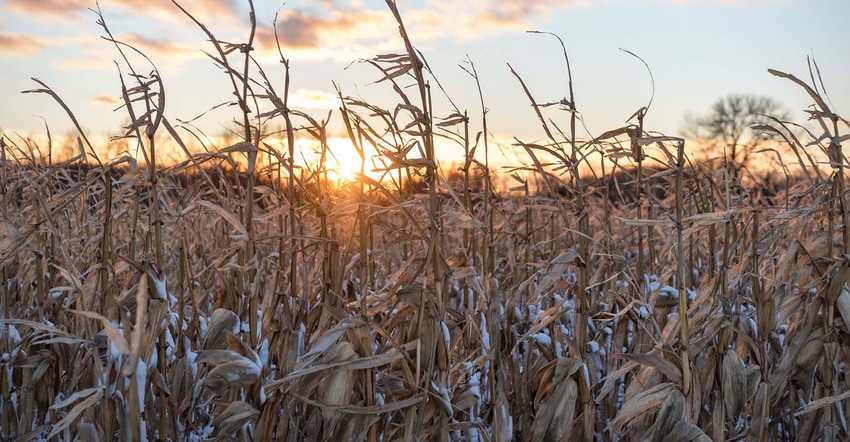
For the past month corn futures have traded in a relatively quiet sideways trading pattern. Thanks to corn carryout now being pegged at 1.7 billion bushels, with a stocks-to-use ratio of 11.5% for the 2020-21 crop year, corn prices are well supported fundamentally. Looking at charts, for the 2021 corn futures contracts, $4 is now considered phenomenal price support.
Lately corn has been more of a follower, a bit of a dark horse, waiting for its next shining moment to stride out. With the December 2020 USDA report showing no changes to the balance sheet, it has been difficult for corn futures to have reason to break out of its current trading range, period.
But that may change soon.
Demand
Many industry analysts feel that corn exports should be increased, and that will surely be the reason for a price breakout. After all, won’t China need to import more corn to feed all those hogs?
Potentially yes, but keep in mind that exports are already pegged at a record 2.65 billion bushels, the highest targeted amount in the past twenty-five years!
Cumulative export sales for corn are at 67% of the USDA total forecast, so we need to continue to see strong weekly sales to keep corn on that targeted export demand course. The value of the U.S. dollar does keep edging lower, which will support exports going forward.
Ethanol demand has been in a short term slump due to less travel over Thanksgiving weekend. Demand will likely also stay lower into year-end with many cities and states enforcing stricter COVID-19 lock down restrictions.
Looking back, on the February 2020 USDA report, (pre-Covid), corn use for ethanol for the 2019/20 crop year was pegged at 5.425 billion bushels. This figure was not changed on the March 2020 USDA report. On the April 2020 USDA report, corn use for ethanol was slashed to 5.05 billion bushels due to Covid complications. On the recent December 2020 USDA report, that figure, for the 2019/20 crop year, is now even lower, coming in at 4.852 billion bushels.
Looking at this current crop year of 2020/21 corn use for ethanol is pegged at 5.05 billion bushels. Could this number be adjusted in January? Possibly, but you can see that demand destruction has been accounted for in previous reports.
Supply
So what am I hinting at with that headline? Yield. Yield is the answer why I feel corn futures have the potential to work higher.
While USDA has already reduced the supply potential for the 2020/21 crop year, there may be more reductions coming. Back on the June 2020 USDA report, corn acres were pegged at 97 million planted acres, with yield potential at 178.5 bushels per acre. Compare that to the recent December report, with planted acres now at 91 million with a yield objective of 175.8 bpa.
When calling clients this fall, Wisconsin and Minnesota were the only states with really good yield numbers being told to me. The majority of clients in the Dakotas, Nebraska, Iowa, Illinois, Indiana, and Ohio were expressing disappointment with yields. “This is no record crop. It’s averaging closer to a little less than my five year average,” was the re-occurring theme I heard over the phone.
So I can’t help but wonder if corn yield might be adjusted slightly lower in the January report. Which led me to do some digging.
This chart looks at corn yield for the past 15 years, and compares what the estimated corn yield was on the December USDA report, versus how it was then adjusted for the January USDA report. The bottom line is that for six out of the last 15 years, corn yield was increased by an average amount of 1.03 bushels. And for nine out of the last 15 years, corn was decreased by an average amount of 1.566 bushels.
If we assume that (for this example) demand stays constant on the January USDA report, and if there is a 1.566 reduction of corn yield on the January USDA report, that will in and of itself, bring ending stocks down to 1.569 billion bushels with a stocks to use ratio of 10%! And it’s only going to be January!
Other factors to watch
There will still be plenty of South American weather to watch, second crop corn in Brazil to obsess over, export demand to monitor (which could potentially increase), and a drought growing in the United States.
I’ll leave you with this. In the crop years where the final corn stocks to use ratio came in lower than 10%, corn futures had tremendous rallies. Those years were: 1995-96, 1996-97, 2003-04, 2010-11, 2011-12, 2012-13, and 2013-14. And you most likely remember how high corn prices got in those years!
Remember, it’s the perception that ending stocks are getting smaller, and stocks-to-use ratios are getting tighter, which ultimately drives prices higher.
Many folks might be taking the quiet moments of the upcoming holidays to “check out.” I encourage you to “check in” to your marketing plan for corn. There is a lot of potential volatility ahead, and you need to be ready for it!
Reach Naomi Blohm: 800-334-9779 Twitter: @naomiblohm and [email protected]
Disclaimer: The data contained herein is believed to be drawn from reliable sources but cannot be guaranteed. Individuals acting on this information are responsible for their own actions. Commodity trading may not be suitable for all recipients of this report. Futures and options trading involve significant risk of loss and may not be suitable for everyone. Therefore, carefully consider whether such trading is suitable for you in light of your financial condition. No representation is being made that scenario planning, strategy or discipline will guarantee success or profits. Any decisions you may make to buy, sell or hold a futures or options position on such research are entirely your own and not in any way deemed to be endorsed by or attributed to Total Farm Marketing. Total Farm Marketing and TFM refer to Stewart-Peterson Group Inc., Stewart-Peterson Inc., and SP Risk Services LLC. Stewart-Peterson Group Inc. is registered with the Commodity Futures Trading Commission (CFTC) as an introducing broker and is a member of National Futures Association. SP Risk Services, LLC is an insurance agency and an equal opportunity provider. Stewart-Peterson Inc. is a publishing company. A customer may have relationships with all three companies. SP Risk Services LLC and Stewart-Peterson Inc. are wholly owned by Stewart-Peterson Group Inc. unless otherwise noted, services referenced are services of Stewart-Peterson Group Inc. Presented for solicitation.
The opinions of the author are not necessarily those of Farm Futures or Farm Progress.
About the Author(s)
You May Also Like






